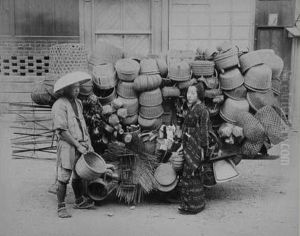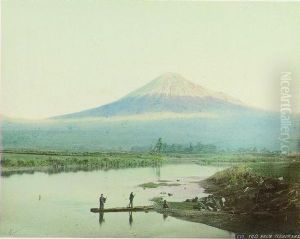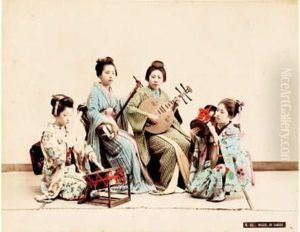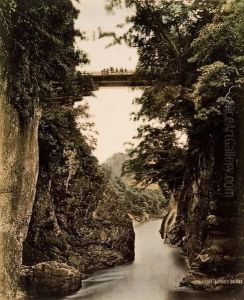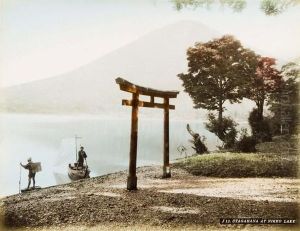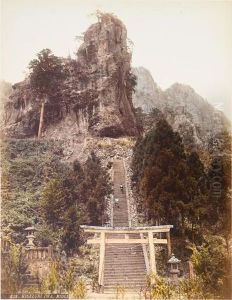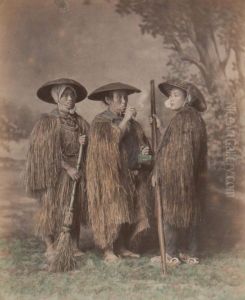Adolfo Farsari Paintings
Adolfo Farsari was an Italian photographer known for his work in Japan during the latter part of the 19th century. Born on February 11, 1841, in Vicenza, Italy, Farsari pursued a career that was quite adventurous and varied, reflecting the dynamic changes of his era.
In his early life, Farsari embarked on a military career, participating in the Second Italian War of Independence in 1859. However, his life took a dramatic turn when he moved to the United States in 1863. There, he enlisted in the Union Army during the American Civil War, where he served until the end of the conflict.
Following his time in the military, Farsari ventured into business, but it wasn't until he moved to Yokohama, Japan, in 1873 that he found his true calling. In Japan, he initially continued in business, but his interest in photography grew, leading him to purchase the Yokohama studio of Felice Beato, another prominent photographer of the time, in 1885.
Farsari's work in Japan coincided with a period of rapid modernization during the Meiji Restoration. He became well-known for his hand-colored photographs, which were highly sought after by foreign residents and visitors as souvenirs and by Japanese customers as well. His images, which often featured traditional Japanese scenes and portraits, played a significant role in shaping Western perceptions of Japan during this time.
Farsari was meticulous in his work, ensuring that his coloring was of the highest quality. His studio became one of the most successful in Yokohama, and his photographs were noted for their artistic composition and technical excellence. He also contributed to the development of photography in Japan by training local photographers and technicians in his methods.
Unfortunately, a significant portion of Farsari's work was lost in the Great Kanto Earthquake of 1923, which destroyed many of the historical photographs of Japan. Despite this loss, Farsari's contribution to the art of photography and the visual documentation of Meiji-era Japan remains significant.
Adolfo Farsari's life and career ended on February 7, 1898, in Yokohama, where he had made his most enduring mark. His photographs continue to be prized by collectors and historians as valuable records of a pivotal moment in Japanese history.
